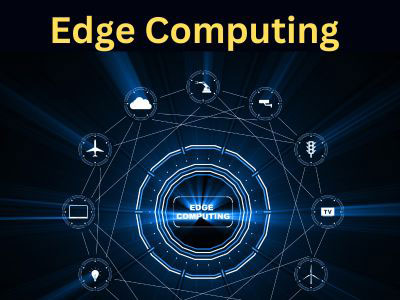Key Takeaway
Edge computing requires hardware like edge devices, sensors, and local servers, as well as software for data processing and analytics. Communication networks, such as 5G or Wi-Fi, are essential for connecting edge nodes to each other and to centralized systems.
Additionally, robust security frameworks are needed to protect distributed systems. Proper infrastructure ensures seamless data flow, real-time processing, and reliability, making edge computing suitable for industries like manufacturing and healthcare.
Essential Hardware Components for Edge Systems
The success of edge computing heavily depends on the hardware components used in edge systems. These components are designed to process, store, and transmit data locally, reducing latency and ensuring real-time decision-making. Key hardware components for edge systems include edge devices, gateways, sensors, and computing hardware.
Edge devices are typically the sensors or actuators that collect data from the environment, such as temperature sensors, motion detectors, or cameras. These devices capture data and either process it locally or send it to the edge for further analysis. Gateways are devices that connect edge devices to the network and often provide additional processing power. They are responsible for collecting, filtering, and forwarding data from multiple devices to the cloud or edge servers.
The computing hardware at the edge is responsible for processing the data locally. This can range from simple microcontrollers to powerful edge servers capable of running machine learning models and performing complex computations. In some cases, these edge devices may also include storage to store data temporarily before it is transmitted or processed further.
By selecting the right hardware components, organizations can build robust edge systems that deliver high performance, low latency, and secure data handling for real-time applications.

Network Requirements for Edge Computing Infrastructure
Edge computing infrastructure requires robust networks to support high-speed data transmission and low latency. Key requirements include stable and high-bandwidth connectivity, optimized routing protocols, and support for various communication standards like Wi-Fi, LTE, and 5G.
Engineers must also consider redundancy and fault tolerance to ensure uninterrupted operations. Network slicing, a feature of 5G, allows dedicated bandwidth allocation for critical edge applications, enhancing reliability and performance.
For engineers, designing networks that meet these requirements is essential for deploying efficient and resilient edge computing systems.
You May Like to Read
Software and Middleware for Managing Edge Deployments
Managing edge deployments requires specialized software and middleware to ensure smooth operation, scalability, and integration of edge devices with IoT and cloud systems. Several tools are essential for this purpose:
1. IoT Platforms
Platforms like AWS IoT Greengrass and Azure IoT Edge offer middleware solutions that manage deployments, handle device communication, and process data locally. They help developers build, deploy, and manage IoT applications on edge devices with minimal complexity.
2. Containerization and Orchestration
Tools like Docker and Kubernetes are commonly used for containerizing applications at the edge. These tools allow developers to deploy and manage containerized applications on edge devices and orchestrate them across a distributed network of edge nodes.
3. Edge AI and Analytics
Middleware solutions also support AI and analytics frameworks to enable edge devices to process data locally using machine learning algorithms. Platforms like AWS SageMaker and Azure Machine Learning provide the tools to train, deploy, and manage machine learning models on edge devices.
Cloud and Edge Integration Infrastructure Needs
Successfully integrating cloud and edge computing infrastructures requires careful planning and coordination. As organizations seek to balance the strengths of both cloud and edge computing, they need to address several critical infrastructure requirements to ensure seamless operation.
One key requirement is network connectivity. Since edge devices need to communicate with cloud infrastructure for tasks like updating software, synchronizing data, or conducting more extensive analysis, a stable, high-speed network connection is essential. This ensures that data can flow smoothly between edge devices and the cloud, particularly in cases where edge processing results are uploaded for further processing or backup.
Data management is another critical component. Managing data at both the edge and the cloud means that organizations need to ensure data consistency across environments. This can be achieved through centralized data management platforms that provide visibility and control over the data, regardless of where it resides. Data synchronization and handling the volume of data generated at the edge are important challenges that require sophisticated systems to avoid data overload and ensure accurate decision-making.
Security and Maintenance Requirements for Edge Systems
Ensuring the security and maintenance of edge systems is critical for their long-term success and reliability. Edge devices are often deployed in remote, unsecured locations, making them more vulnerable to physical tampering and cyber-attacks. To address this, edge systems must incorporate strong authentication methods (such as device certificates), data encryption (both in transit and at rest), and secure boot processes to ensure that only trusted firmware and software run on the device.
Regular software updates and patch management are essential to maintaining the security of edge systems. Many edge devices operate in harsh environments, so remote management capabilities are needed to ensure that updates can be pushed to devices without requiring physical access. This is particularly important for industries like manufacturing or transportation, where edge devices are often distributed across a wide geographical area.
Another important consideration is device lifecycle management. Since edge devices are often deployed in remote locations, ensuring their ongoing performance and reliability requires continuous monitoring, diagnostics, and maintenance. Implementing a robust maintenance plan that includes regular checks, firmware updates, and replacements when necessary will help reduce the risk of system failures and improve overall uptime.
Conclusion
In conclusion, edge computing requires a network of distributed devices, sensors, and processing units to function efficiently. The infrastructure includes edge nodes, communication networks, and local computing resources that process data near the source rather than relying on centralized cloud data centers.
This distributed architecture ensures that edge computing can support real-time applications, reduce latency, and improve system reliability. As the demand for IoT and real-time data processing grows, the infrastructure for edge computing will continue to evolve, supporting more intelligent and efficient systems.
